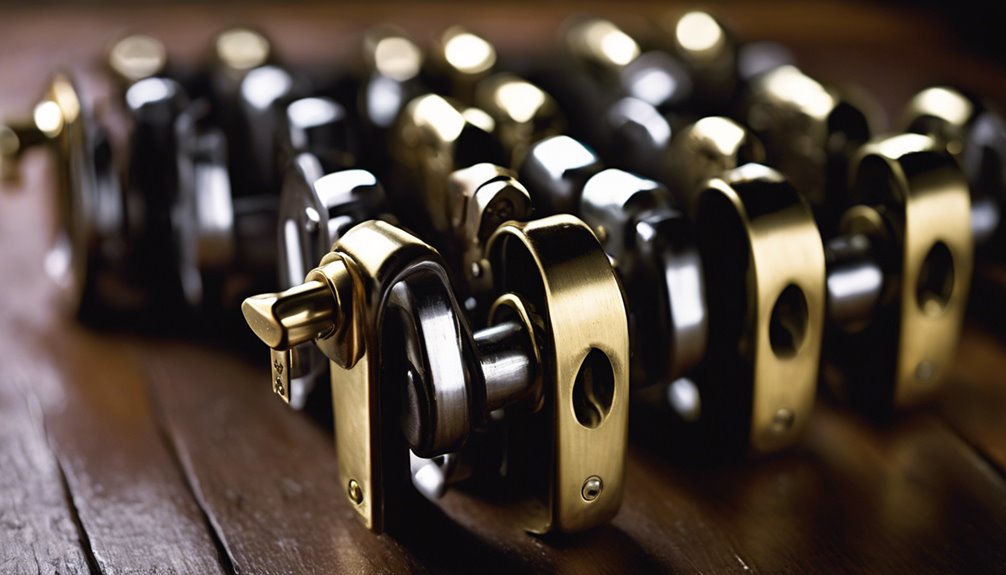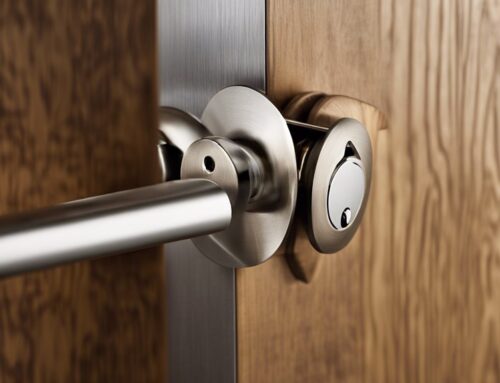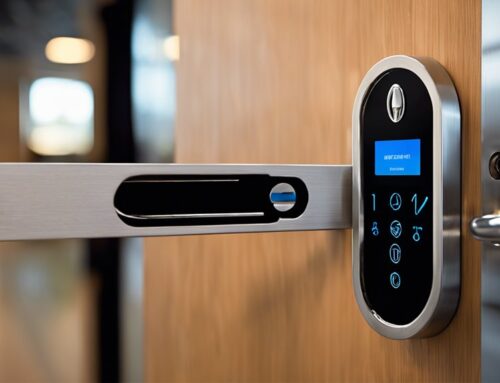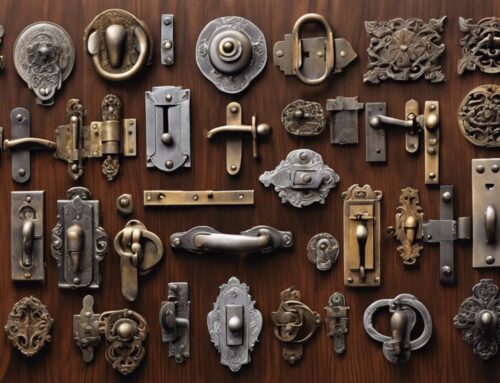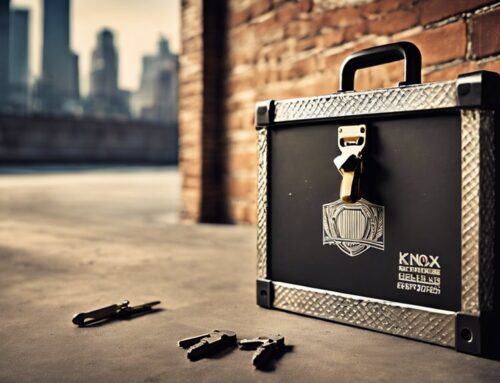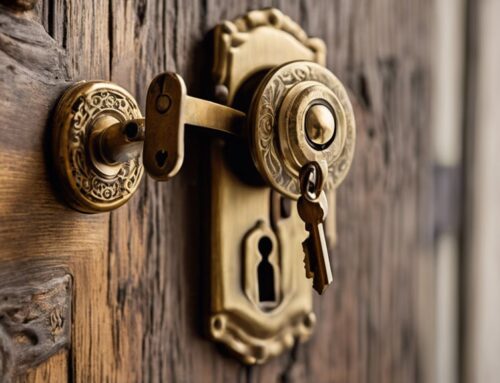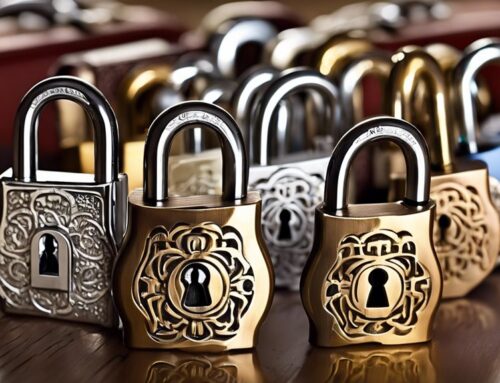When it comes to security, understanding tumbler locks is essential for choosing the right solution for your needs. You might encounter different types, like pin, lever, and wafer tumbler locks, each designed for specific applications and security levels. Knowing how each type operates and where it’s best utilized can aid you in making an informed decision. What’s significant, though, is recognizing the unique security features that set these locks apart—unlocking key insights into their effectiveness and limitations. As you explore further, you’ll discover what truly makes each design stand out in the world of security.
Key Takeaways
- Tumbler locks are made up of movable components that align with the correct key to allow for lock rotation, providing security for various applications.
- Common types include pin tumbler, lever tumbler, and wafer tumbler, each differing in design and security features.
- Pin tumbler locks offer reliable security by requiring precise key alignment, while lever tumbler locks resist picking attempts effectively.
- Tumbler locks are used across residential, commercial, automotive, public facilities, and even bicycle security applications.
- Customization options and rekeying capabilities in tumbler locks enhance security and adaptability for different user needs.
Overview of Tumbler Locks
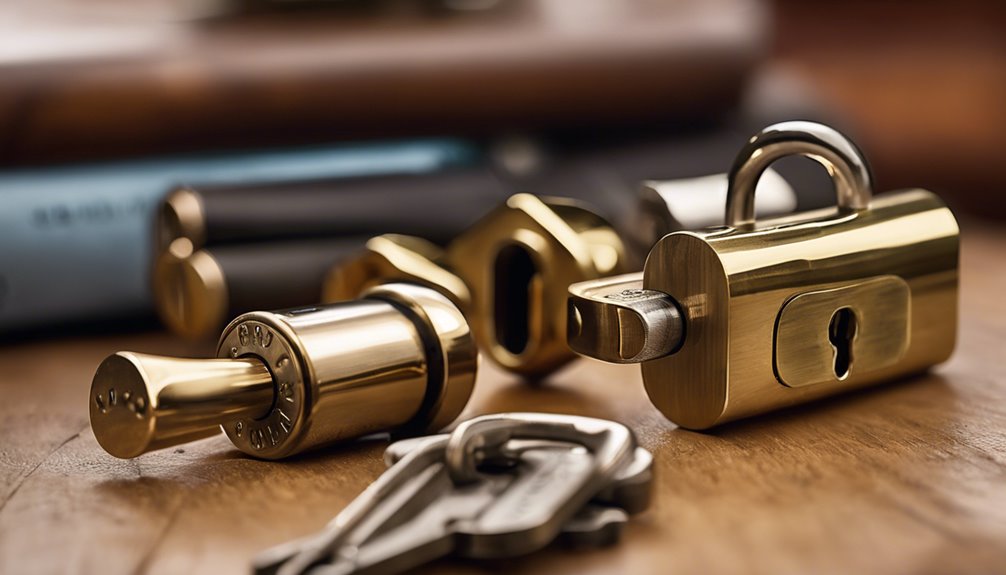
Tumbler locks are an integral component in the domain of security devices, providing a reliable mechanism for safeguarding valuables. Their design typically utilizes a series of movable components, or tumblers, that must align properly to open.
When you insert the correct key, it lifts these tumblers to a designated height, allowing the lock to turn freely. The precision involved in this interaction is vital; any misalignment renders the lock inoperable. Additionally, the integrity of these mechanisms can be compromised if tumblers are manipulated, highlighting the importance of selecting high-quality locks. High-security locks often feature advanced pins that provide an additional layer of protection against unauthorized access.
Tumbler locks vary in complexity, influencing both security and application settings. Understanding their operational mechanics allows you to appreciate the integrity and effectiveness of these devices in securing both residential and commercial environments.
Mastery of this knowledge empowers you to select and utilize tumbler locks effectively in your security strategies.
Types of Tumbler Locks
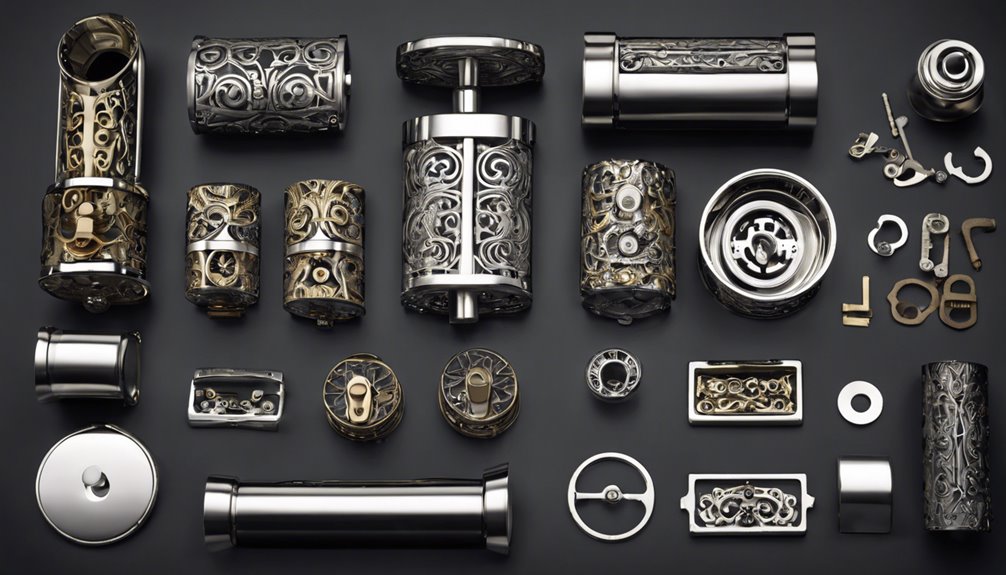
Understanding the different types of tumbler locks is essential for selecting the right security solution.
You’ll encounter various mechanisms, such as the pin tumbler, lever tumbler, and wafer tumbler, each with unique features and applications.
Let’s explore these mechanisms in detail to assess their security levels and practical uses. Additionally, the effectiveness of these locks often hinges on the precise alignment of lock pins and tumblers, which are critical for enhancing overall security.
Pin Tumbler Mechanism Explained
The pin tumbler mechanism is a widely used locking system that offers a reliable way to secure a variety of applications. This system consists of a cylinder, pins, and springs. When a key is inserted, its unique cuts align with the pins at the shear line, allowing the cylinder to rotate. Each pin stack features a driver pin and a key pin; when the key is absent, the driver pin prevents cylinder movement. Recognizing the vulnerabilities of locks is essential to ensure that the security provided by pin tumbler locks is not merely a façade. For peak security, manufacturers may employ varying pin lengths or additional pins, making unauthorized access more challenging. Additionally, the ability to re-key a lock enables property owners to maintain security without replacing the entire lock system. Understanding how this mechanism operates helps you appreciate its effectiveness for residential, commercial, and automotive locks, highlighting its versatility and essential role in security design.
Lever Tumbler Security Analysis
While many people are familiar with pin tumbler locks, lever tumbler locks present a distinct and robust alternative that merits examination.
Lever locks operate through the movement of levers, which must align correctly to allow the bolt to retract. This design inherently provides superior resistance against various attack methods, such as picking or bumping.
You’ll appreciate that the complexity and number of levers—typically ranging from three to six—can greatly enhance security. In addition, lever tumbler locks are less susceptible to wear over time, contributing to their longevity. Furthermore, incorporating features of high-security locks into lever lock designs can elevate protection against unauthorized access.
However, it’s vital to recognize that not all lever locks offer the same level of security, so evaluating their construction and materials is important for effective application in your security strategy.
Wafer Tumbler Applications Overview
Wafer tumbler locks serve as an efficient blend of security and ease of use, making them a popular choice in various applications.
You’ll find these locks frequently utilized in cabinet locks, office furniture, and electronic devices due to their compact design. The simplicity in their mechanism allows for a streamlined manufacturing process, resulting in cost-effective solutions for businesses. Additionally, many locksmiths can easily replace wafer locks, ensuring minimal downtime for users.
Additionally, wafer locks are often used in automotive applications, providing reliable security for car doors and ignition systems. Their versatility is further enhanced with customizable key cuts, enabling specific access control. While they offer decent security levels, remember that more advanced locking systems are required for high-security environments where higher risks are involved. Furthermore, wafer tumbler locks are one of the various lock types within the broader category of replaceable locks, showcasing their adaptability across different sectors.
Pin Tumbler Locks Explained
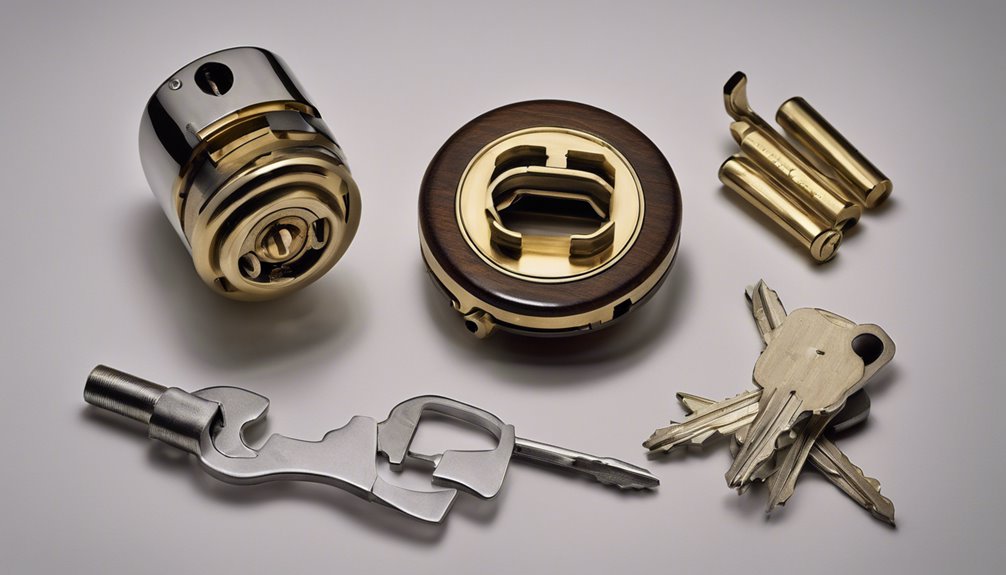
Pin tumbler locks are a cornerstone of modern locking mechanisms, widely used for their security and reliability. Understanding how these locks operate can enhance your security protocol.
They’re composed of a series of pins that must align to the correct height, allowing the cylinder to turn.
- Feel the peace of mind knowing your spaces are secure.
- Experience the satisfaction of mastering lock mechanics.
- Enjoy the versatility these locks offer for various applications.
- Appreciate the durability that withstands the test of time.
- Recognize the effectiveness against unauthorized entry.
The re-keying process in these locks involves changing the pins and tumblers, allowing a new key to operate without replacing the entire lock. This process can often be a more cost-effective solution than replacing locks, making it a practical choice for many homeowners.
Wafer Tumbler Locks Overview
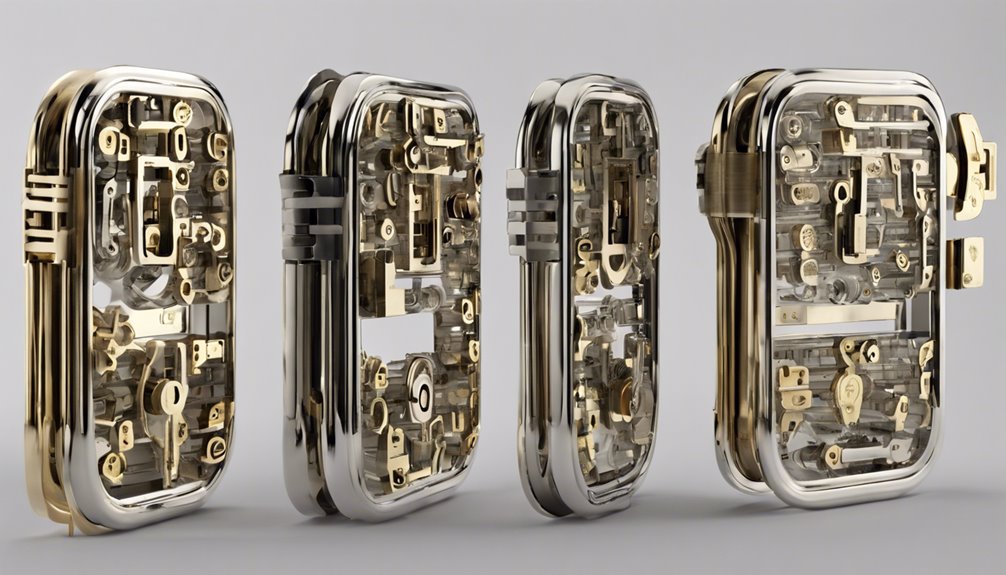
Wafer tumbler locks utilize a flat, spring-loaded design that sets them apart from traditional pin tumbler locks.
You’ll find that while their mechanism offers ease of use, they also present specific security limitations worth considering.
Understanding both the design and security aspects will help you make informed choices for your locking needs.
Design and Mechanism
Tumbler locks rely on a unique design that utilizes flat wafers to secure the locking mechanism. Each wafer is precisely cut to match the unique key corresponding to the lock. When you insert the correct key, the wafers align, allowing the lock to turn smoothly.
This innovative system enhances reliability and offers a higher level of complexity compared to traditional pin tumbler locks.
- Feel the assurance of a well-engineered locking system.
- Experience the seamless engagement of wafers and key.
- Trust in the durability of simple, robust designs.
- Relish the satisfaction of mastering lock intricacies.
- Appreciate the finesse that comes from intricate mechanical design.
Understanding this mechanism is essential for leveraging the advantages of wafer tumbler locks effectively.
Security and Limitations
While wafer locks offer enhanced complexity and reliability, their security isn’t absolute. As with any locking mechanism, understanding the limitations can help you make informed decisions. Additionally, for those with high-security needs, it may be more beneficial to consider alternatives such as re-keying or replacing locks. Premium locks often feature advanced technologies that provide added security measures for those looking to strengthen their premises.
| Strengths | Limitations |
|---|---|
| Increased resistance to picking | Susceptible to shim attacks |
| Compact and easy to install | Limited key customization |
| Cost-effective solution | Lower security than pin tumbler locks |
| User-friendly design | Vulnerable to wear over time |
| Versatile applications | Not suitable for high-security needs |
Choosing wafer locks for certain applications can be beneficial, but it is vital to assess your specific security requirements. Always evaluate your environment to determine if wafer locks align with your safety expectations.
Applications of Tumbler Locks
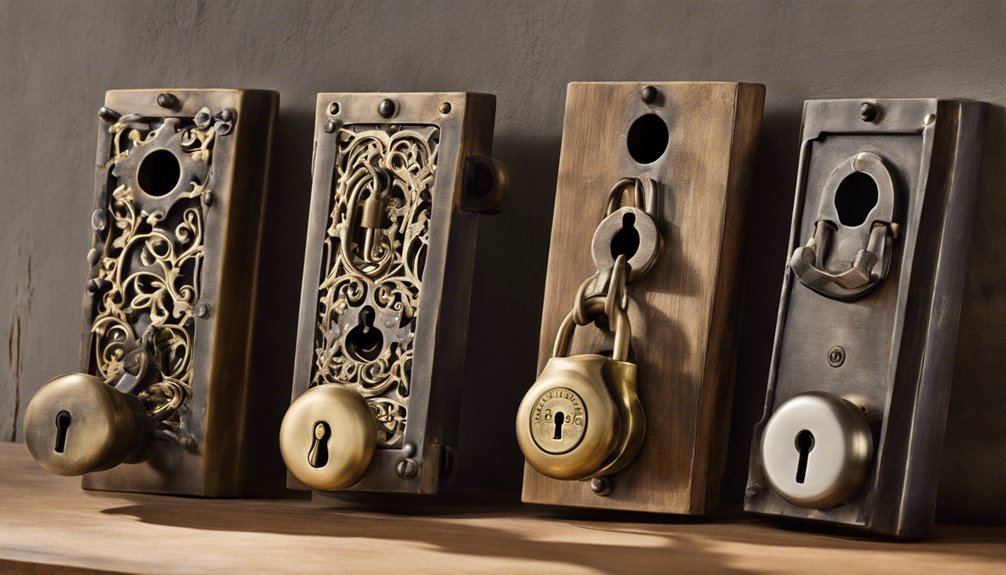
Tumbler locks play an essential role in various applications, providing security and convenience across multiple settings. You’ll find these locks safeguarding homes, businesses, and public spaces, ensuring peace of mind.
Their versatility makes them suitable for:
- Residential security: Protecting your loved ones and valuables. Additionally, many homeowners choose to re-key their locks after moving in to enhance their safety.
- Commercial use: Securing sensitive documents and inventory.
- Automotive applications: Keeping your vehicle safe from theft.
- Public facilities: Maintaining safety in schools and hospitals.
- Bicycle locks: Offering portable protection for your transportation.
Understanding where to utilize tumbler locks can greatly enhance your security strategy. Additionally, many property owners opt for re-keying locks as a cost-effective alternative to complete lock replacement, further improving their overall security management.
Their sturdy mechanism and trusted reliability position them as a foundational element in security systems, allowing you to feel confident in your protection.
Security Features of Each Type
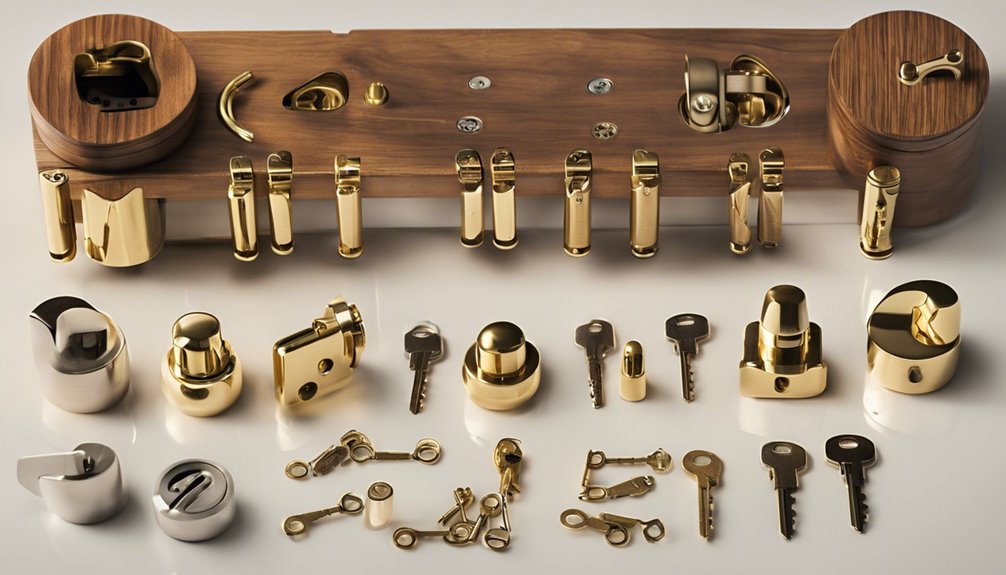
When evaluating the security features of different types of tumbler locks, it’s important to recognize how their design influences reliability and effectiveness.
Pin tumbler locks typically utilize a key with uniquely cut grooves, preventing unauthorized entry by requiring exact alignment of pins.
Disc tumbler locks, on the other hand, employ rotating discs to increase resistance to lock-picking and bumping.
High-security locks often incorporate additional measures such as hardened materials and complex internal configurations, which greatly enhance resistance to tampering.
You’ll also find electronic tumbler locks featuring biometric or keypad access, offering convenient yet secure alternatives.
Each type’s security features address specific vulnerabilities, so understanding these distinctions helps you choose the right lock to meet your security needs. Implementing high-security locks can also lead to potential insurance discounts, offering financial benefits alongside enhanced protection.
Key Types and Their Functions
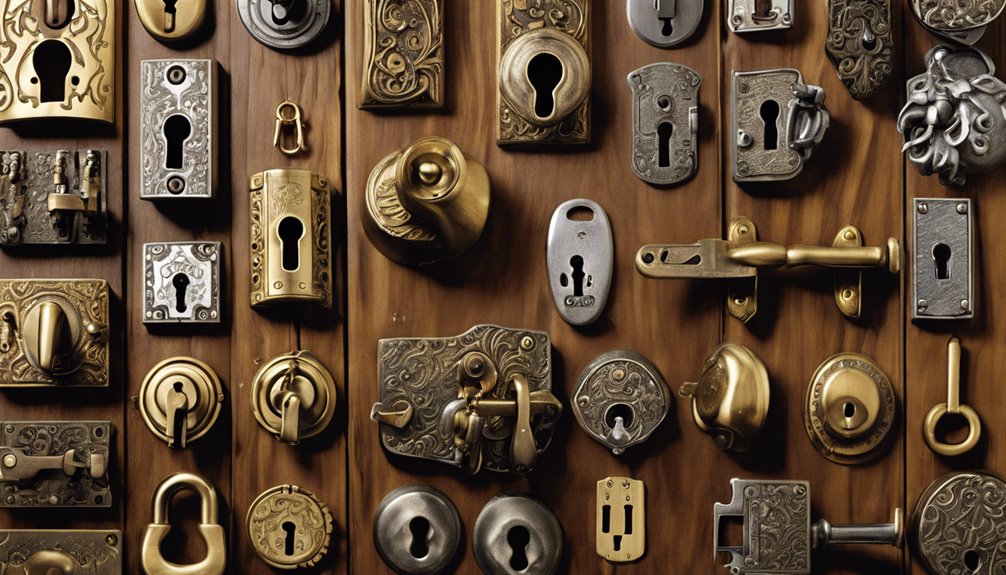
Understanding the various key types and their functions is essential for selecting the appropriate tumbler lock for your security needs. Each key type serves a unique purpose, influencing the lock’s overall security and ease of use.
- Pin tumbler keys provide standard security, aligning with common household needs.
- Double-sided keys enhance security in high-risk areas, perfect for businesses.
- Master keys allow access to multiple locks, ensuring convenience for authorized personnel.
- Restricted keys offer superior protection due to their limited distribution, making duplication difficult.
- Electronic keys enable advanced access control, integrating technology for modern security solutions.
Customization Options for Tumbler Locks
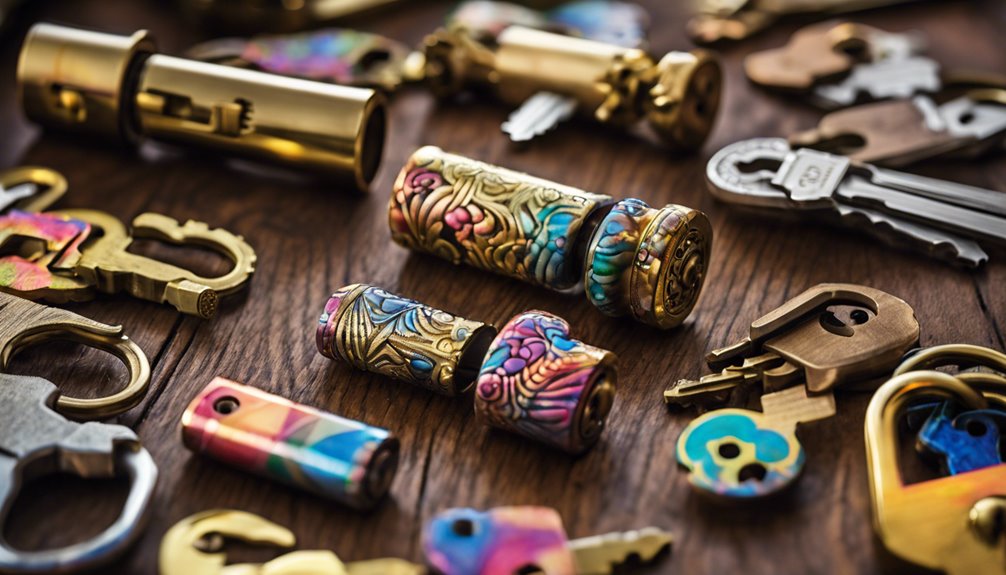
Customization options for tumbler locks can greatly enhance security and convenience, allowing you to tailor the locking system to your specific needs.
You can choose different configurations of tumblers, such as pin tumbler or disc tumbler systems, based on the level of security required. Additionally, you might opt for specialized keyways to prevent unauthorized duplication.
You can also integrate advanced features like rekeying capabilities, which enable you to change the lock’s internal settings without replacing the entire system.
Moreover, consider selecting materials that offer weather resistance or enhanced durability to withstand various environmental conditions.
Choosing the Right Lock for Your Needs
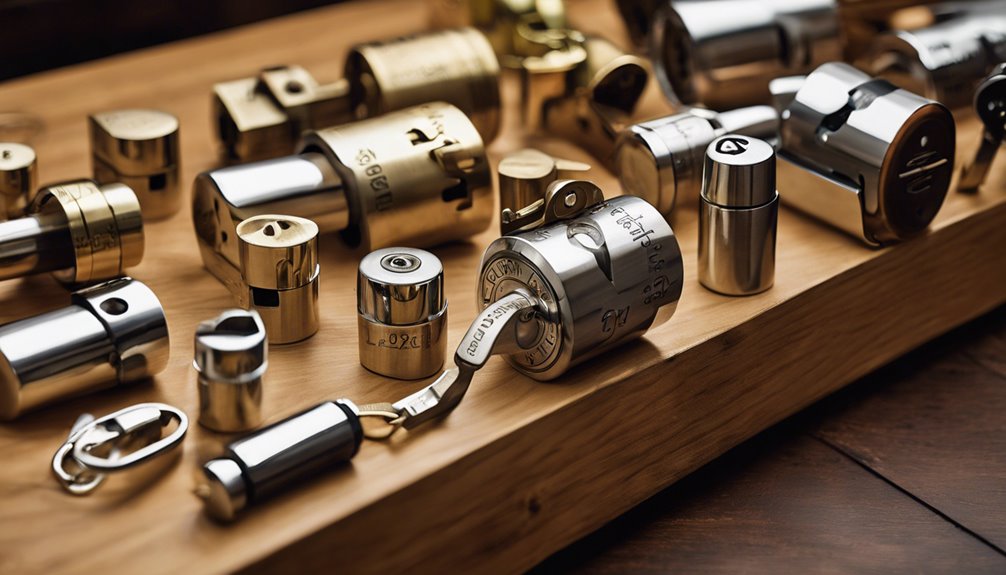
How do you determine which tumbler lock best suits your security needs? Start by evaluating your specific requirements.
Consider the desired level of security, location, and lock durability.
- Protect your loved ones and valuables.
- Enhance your peace of mind.
- Invest in long-term reliability.
- Guarantee seamless access for authorized users.
- Experience the satisfaction of superior security.
Additionally, evaluate the lock’s features, such as pick resistance and key control options.
You’ll want a lock that balances security with practicality while guaranteeing compatibility with your existing systems.
By thoroughly analyzing these factors, you can confidently select a tumbler lock that meets your unique needs, guaranteeing the protection and resilience you deserve.
Take your time, and make an informed decision that reflects your security priorities.
Frequently Asked Questions
How Do I Maintain My Tumbler Locks for Longevity?
To maintain your tumbler locks for longevity, regularly inspect them for dirt and debris.
Clean the keyway with compressed air to eliminate dust, and lubricate the lock using a graphite powder or silicone spray—avoid oils that attract dirt.
Insert and remove the key several times to distribute the lubricant throughout the mechanism.
Finally, check for any signs of wear or damage and address them promptly to guarantee peak performance and security.
Can Tumbler Locks Be Rekeyed Easily?
“Good things come to those who wait.” When considering whether tumbler locks can be rekeyed easily, the answer’s yes, with the right tools and knowledge.
You’ll need a rekeying kit specific to your lock type. By following the manufacturer’s instructions, you can change the lock’s internal pins to match a new key, thereby maintaining security without replacing the entire lock.
This process enhances your control over access while extending the lock’s effective lifespan.
What Tools Are Needed for Tumblers Lock Picking?
To effectively pick tumbler locks, you’ll need a few essential tools. Start with a set of lock picks, including a tension wrench and various pick shapes like hook and rake picks.
A flashlight can help you see inside the lock. If you’re serious about mastering this skill, consider practicing on transparent locks to visualize the process.
Patience and practice are key, so take your time to understand how each tool works with the lock mechanisms.
Are There Any Smart Tumbler Lock Options Available?
Picture yourself in a futuristic tech hub, where smart tumbler locks reign.
Yes, there are smart tumbler lock options available that combine traditional security with cutting-edge technology. You can find locks integrating Bluetooth and smartphone apps for access control, allowing you to open doors remotely or grant temporary access to guests.
These systems often feature keypads or biometric scanners, enhancing security while offering convenience far beyond standard mechanical locks.
How Do Environmental Factors Affect Tumbler Locks?
Environmental factors considerably affect tumbler locks’ performance and longevity.
Humidity can lead to corrosion, while extreme temperatures can cause materials to expand or contract, impairing functionality.
Dust, dirt, and debris can also clog internal mechanisms, hindering operation.
When you install tumbler locks, consider the climate and location.
Regular maintenance, like lubrication and cleaning, guarantees peak performance, helping prevent failures and extending the lock’s lifespan despite the challenges posed by environmental conditions.
Conclusion
In conclusion, understanding tumbler locks empowers you to make informed decisions. Whether you choose pin tumbler locks for high security, wafer tumbler locks for cost-effectiveness, or lever tumbler locks for resistance to picking, each type serves a distinct purpose. By considering their applications, security features, and customization options, you can select the right lock that meets your specific needs. Remember, an informed choice enhances your security, boosts your peace of mind, and protects what matters most to you.

